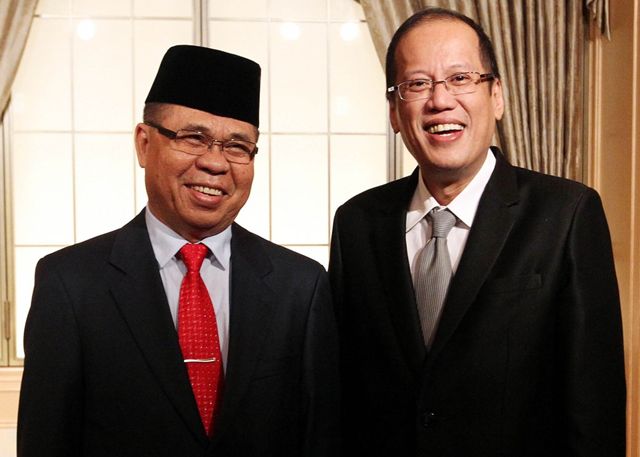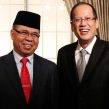
The American Military Presence and Terrorist Safe Havens in the Southern Philippines
Publication: Terrorism Monitor Volume: 10 Issue: 1
By:

One of the smaller deployments of U.S. troops under the banner of the “global war on terrorism” was that of U.S. Special Forces to parts of the southern Philippines in 2002. This deployment was limited to advising the Armed Forces of the Philippines (AFP) in their effort to defeat terrorist groups and to prevent the establishment of terrorist safe havens. [1] These aims were met with some success: militant networks were ejected from mainland Mindanao, whilst the Abu Sayyaf Group (ASG) was largely destroyed in its island strongholds. However, in weakening the Moro Islamic Liberation Front (MILF) – the dominant insurgent group in Mindanao –the success of the deployment has the potential to also be its undoing.
Initially, it was unclear which of the Philippines’ many groups of armed, anti-state and potentially violent men were to be labeled “terrorists.” However, when the administration of former president Gloria Macapagal Arroyo successfully lobbied the U.S. government to leave the approximately 10,000 strong MILF off a terrorist watch-list, an attempt to clearly delineate “insurgents” from “terrorists” followed – a necessary condition, perhaps, for moving forward a struggling peace process between the MILF and the government of the Republic of the Philippines.
At least as far as it can be considered a unified entity, the MILF has long ceased to shelter members of the Abu Sayyaf and Jemaah Islamiya networks in its camps. American counterterrorism efforts appear to have been instrumental in bringing about this development. Apart from a brief return to violence in 2008, the MILF has remained committed to its ceasefire and continued dialogue with the government. The head of the MILF Coordinating Committee for the Cessation of Hostilities, Rashid Ladiasan, stated that “as long as we provide a space for dialogue, the U.S. appreciates [the MILF position]’. [2] While the MILF appear to be reassured that they are not the direct target of the American military presence, they remain wary of it. Ladiasan continues: “In Maguindanao [province] there were spy planes [i.e. drones] that we captured. The fear was that the U.S. was targeting us…We are sure they are looking at us.”
While the capture of American drone aircraft has not been independently verified, the MILF remains highly sensitive to the American presence and policy priorities, a significant factor in ensuring a continued commitment from the movement to observe the ceasefire and continue its dialogue with the government. Indeed, MILF representatives have attempted to turn fear of a powerful external military capability into a public welcome of U.S. political involvement. For instance, Professor Abhoud Lingga, a MILF peace panel representative, states: “We believe the U.S. created the problem, so it should help solve the problem,” an apparent reference to the former U.S. colonial role in the Philippines. [3] MILF lawyer Michael Mastura meanwhile makes further appeals to U.S. sensibilities: “[The conflict in Mindanao] renders possible a universal appeal to the basic principle of American ‘fairness and sense of justice’ to use U.S. good offices to rectify [it].” [4]
The current administration of Benigno Aquino III came to office intending to prioritize resolution of the conflict in Mindanao by aiming for an inclusive settlement that includes non-MILF Christian and Muslim groups. A major difficulty thrown up by this strategy, however, is determining at which stage the MILF are brought on board with power-sharing agreements in the current and future Autonomous Region of Muslim Mindanao (ARMM). While the U.S.-enabled inhibition of MILF militancy holds, the Manila government may be tempted to clean up the ARMM first with an interim government before working out how to bring in the MILF.
However, the longer settlement with the MILF is postponed, the greater the danger that the group will fracture as supporters and fighters become disillusioned with negotiations. A portent of this trend has been seen with the splitting off of Ameril Kato’s Bangsamoro Islamic Freedom Fighters (BIFF), a development that MILF Vice Chairman Ghadzali Jhafaar says occurred because Kato believed peace talks were “going nowhere.” (Daily Tribune [Manila], August 20, 2011; Philippine Inquirer [Manila], August 20, 2011; see also Terrorism Monitor, September 9, 2011). [5] Some policy makers in the Philippines and beyond celebrate such a trend as it represents the diminishment of an enemy split into increasingly smaller and apparently less threatening units.
For the United States, this kind of thinking overlooks a more dangerous reality: the growing trend to factionalism in the MILF may add substantially to the chaos of Mindanao’s political space. In an ungovernable environment in which factions fear one another as much as they fear outside parties such as the Manila government or U.S. forces, the temptation to offer sanctuary to foreign militants offering money and expertise may increase. The American military presence has the potential to create a paradoxical effect – while raising the cost of belligerence to the MILF; it also increases the likelihood of the movement’s disintegration. Such a development may help, rather than hinder, Islamist militants in finding shelter in the southern Philippines.
Justin Hempson-Jones is a freelance analyst. He recently completed an MPhil in International Relations at the University of Oxford.
Notes:
1. See U.S. Joint Special Operations Task Force – Philippines (JSOTF-P) website, https://jsotf-p.blogspot.com/2011/09/type-your-summary-here_20.html
2. Author’s interview with Rashid Ladiasan, Cotabato City, October 6, 2010.
3. Author’s interview with Abhoud Lingga, Cotabato City, October 4, 2010.
4. Michael O. Mastura, quoted in “About Us” section of the MILF website:
https://www.luwaran.com/home/index.php?option=com_content&view=section&layout=blog&id=15&Itemid=544





